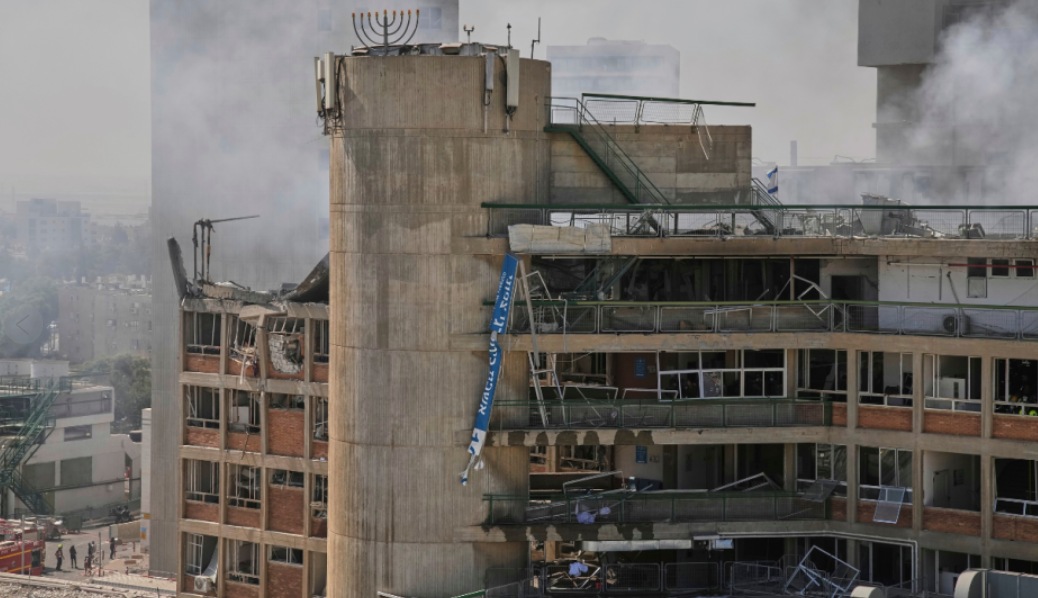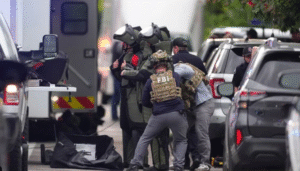Israel-Iran nuclear conflict erupted into a broader regional war on June 19, 2025, as Israeli warplanes bombed Iran’s Arak heavy-water reactor and military infrastructure. Iran responded with barrages of missiles and drones hitting Israeli cities and critical institutions. The crisis has sparked international alarm, prompted diplomatic interventions, and raised serious legal, military, and humanitarian concerns.
1. Background to the Strikes: A Strategic Calculus
Israel’s June 13 “Operation Rising Lion” marked its boldest direct attack on Iranian soil. Deploying over 200 fighter jets, including F‑35Is, Israel struck roughly 100 targets—nuclear facilities at Natanz and Arak, missile sites, and senior IRGC commanders. Simultaneously, Israel used covert drone teams smuggled in by Mossad to neutralize missile launchers and air-defense systems inside Iran.
Despite Iran’s near‑weapons‑grade enrichment, experts and U.S. intelligence asserted Tehran was not actively weaponizing nuclear material, calling Israel’s strikes “preventive” in motive but not imminently justified. Legal scholars argue the action may not meet the international pretext for a preemptive strike due to insufficient evidence of immediate intent. Yet Israeli leadership insists it struck to eliminate an existential threat.
2. What Was Hit—and Why It Matters
- Arak Heavy Water Reactor: Located ~250 km southwest of Tehran, Arak was inoperative and contained no nuclear fuel—yet it represented a “plutonium pathway” if reactivated.
- Natanz & Fordo Enrichment Sites: Natanz’s centrifuge halls were heavily damaged, and Fordo was reportedly spared radiation risk but still hit.
- Military & Scientific Targets: Israel claims its drones destroyed two‑thirds of Iran’s ballistic missile launchers, while Iran alleges nearly 224 dead in Iran, including scientists, and civilian infrastructure was damaged.
Though radiation exposure is low according to IAEA and health experts, concerns remain around toxic chemicals like fluorine used in uranium processing. Damage to Iran’s network could delay plutonium production—but experts warn Tehran may shift underground or accelerate covert efforts.
3. Iran’s Response: Retaliatory Strikes and Global Diplomatic Ripples
Iran retaliated by launching hundreds of missiles and drones at Israel. On June 19, a Sejjil ballistic missile struck Soroka Medical Center in Beersheba, injuring over 240 people in a “near-miss massacre”. The prestigious Weizmann Institute of Science also suffered direct hits, targeting Israel’s top scientific assets.
| Casualties | Damage |
|---|---|
| Iran: ~657 killed | Hospitals, missile bases, and military sites struck |
| Israel: 24 killed, 240+ injured | Scientific and civic infrastructure hit |
Amid escalating violence, U.S. President Trump has indicated the U.S. may enter the conflict within two weeks, with diplomacy still on the table. Negotiations between Iranian and European officials are scheduled in Geneva, offering a fleeting hope of de-escalation.
4. Wider Implications: Diplomacy, Law, and Global Security
European powers (Germany, UK, France) are pushing to revive diplomacy, urging urgent nuclear guarantees from Iran. Meanwhile, China has condemned attacks on nuclear sites as setting a “dangerous precedent”.
Absent quick diplomacy, this conflict threatens to draw in major powers and destabilize the Middle East further.
Conclusion
The Israel–Iran nuclear conflict of June 2025 marks a watershed moment in Middle Eastern geopolitics, characterized by bold Israeli preemptive strikes, fierce Iranian retaliation, and a tenuous diplomatic dance. Israel’s primary aim—to delay Iran’s nuclear capacity—is clear, but the risks are surging: wider war, covert proliferation, global economic ripples, and the erosion of international arms control norms.
Time is running short: with U.S. intervention looming and European diplomacy at the brink, the next fortnight may define whether this crisis spirals deeper—or if cooler heads secure a brief ceasefire and a return to negotiation.
Subscribe to trusted news sites like USnewsSphere.com for continuous updates.
[USnewsSphere.com / tg]





